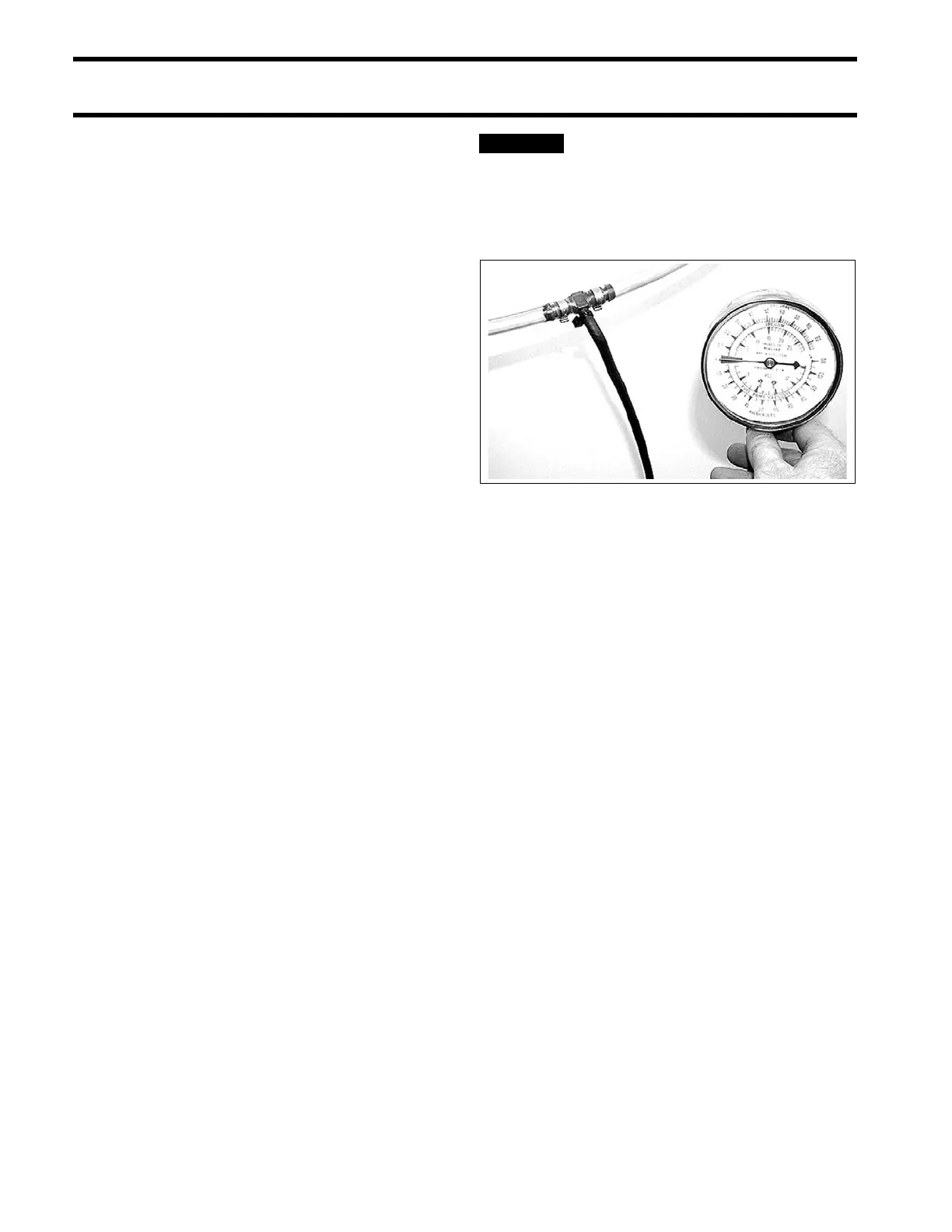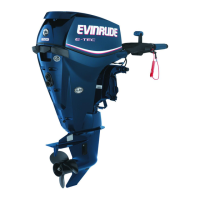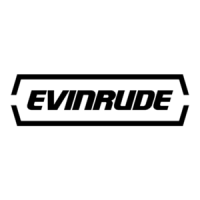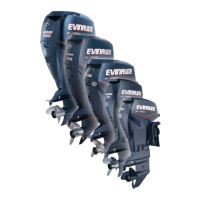140
FUEL SYSTEM
FUEL SYSTEM TESTS
Results:
Normal pressure:
• Perform the Lift Pump Vacuum Test on p. 140.
Make sure no a ir lea ks or restrictions ex ist in
the fuel supply hose or boat fuel system.
Low pressure:
• Check pulse hoses and fittings for restrictions.
• Perform the Lift Pump Vacuum Test on p. 140.
Make sure no a ir lea ks or restrictions ex ist in
the fuel supply hose or boat fuel system.
• Check fuel flow through fuel lift pump. Use fu el
primer bulb to force fuel through pump.
No pressure:
• Check pulse hoses and fittings restrictions.
• Check fuel flow through fuel lift pump. Use fu el
primer o r primer bulb to force fu el throu gh
pump.
• Momentarily prime or squee ze p rimer bulb to
check gauge operation.
• Check pulse hose and fittings for restrictions.
Lift Pump Vacuum Test
Confirm fuel supply to the fuel lift pump.
Temporarily install a vacu um gauge, T-fitting, and
8 in. (20.3 cm) of clear vinyl hose between the fuel
supply hose and fuel lift pump (inlet). Secure con-
nections with tie straps to prevent fuel or air leaks.
Do not use fuel primer bulb, manual
fuel primer, or electric fuel pump primer to
restart outboard. A positive pressure in the
fuel supply could damage some vacuum
gauges.
START outboard and run at FULL THROTTLE for
at least two minutes. Monitor clear vinyl ho se for
the presence of air . Air bubbles ind icate a faulty
hose, connection, o r f uel tank p ick-up. Repair, if
necessary, before proceeding.
There should be no air or vapor bubbles visible in
the clear hose. The maximum inlet fuel va cuum
should not exceed 4 in. Hg. (13.5 kPa) at the inlet
to the fuel lif t pu mp under any o perating cond i-
tions (IDLE to WOT).
A higher vacuum indicate s an excessive restric-
tion in the fuel supply. Repair as needed. Refer to
FUEL SYSTEM REQUIREMENTS on p. 130 for
fuel supply component requirements.
000243
